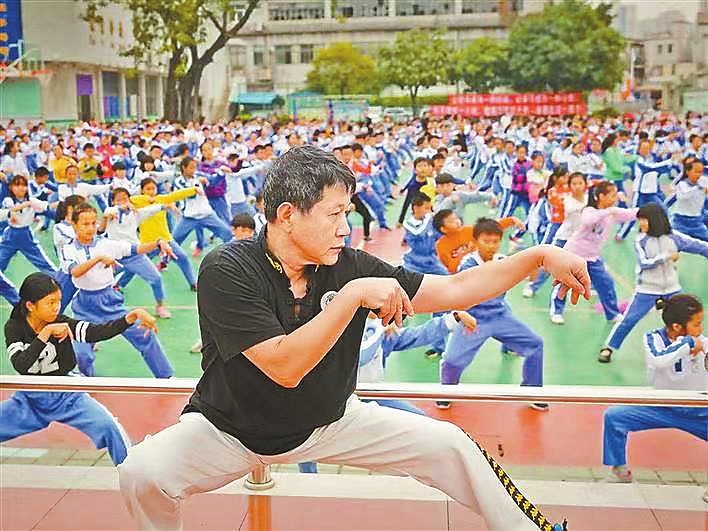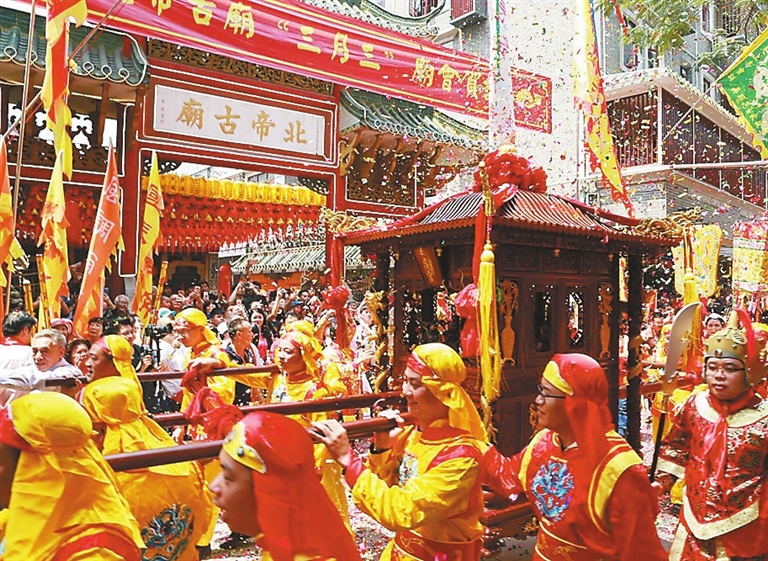


SHENZHEN saw the number of its provincial-level intangible cultural heritage items rise from the previous 27 to 31 as Guangdong announced May 20 the eighth batch of the representative list of intangible cultural heritage. On the list are 115 items, including 43 new items and 72 expanded items. Shenzhen has four items on the list: the Shajing oyster-farming-related customs, mantis fist, Zhu Family acupuncture and chiropractics, and Xixiang’s temple fair celebrating the birthday of Bei Di (Park Tai, the Northern Emperor) on the 3rd day of the third lunar month. Three of the four recognized cultural traditions are rooted in Bao’an District. Farming oysters, one of the most famous feature products of Shenzhen, has a history dating back to the Song Dynasty (960-1279) in Shajing. Shajing people have been raising oysters in the sea since then and oyster farming boomed in the Ming (1366-1644) and Qing (1644-1911) dynasties. The traditional industry methods even now continue to flourish, attracting counterparts form home and abroad to learn about their productive farming methods. Today, oyster farms can be seen in Shenzhen’s Shajing, Fuyong, Yantian, Qianhai and Houhai as well as in Hong Kong’s Lau Fau Shan area. Even oyster farms in other Guangdong cities like Yangjiang, Taishan and Huidong share the same roots of Shajing, with their oyster bases built by Shajing oyster farmers who settled down to take shelter from serious local water pollution in the 1980s. Oyster farmers in Shajing have worked out a set of well-established procedures during their long history of oyster breeding. From planting to harvest, the production involves cultivating oyster larvae, arranging shells, transporting oysters from mudflats to rafts and cracking open the shells. During the production, centuries-old mariculture traditions like making oyster shell walls and worshiping Tianhou (Mazu, goddess of the sea) and Guanyin (the Bodhisattva of compassion) took shape and were passed down from generation to generation, forging today’s unique oyster-farming-related culture in Shajing. Mantis fist Mantis Fist is one of the four famous fists from East China’s Shandong Province. This treasured Chinese martial arts technique dates back to the end of the Ming Dynasty. It belongs to the category of pictographic fists. Legend has it that a man named Wang Lang based the technique on the moves of a mantis hunting cicadas. Mantis fist was brought to Shajing by Shandong martial artist Li Kushan in the early 1900s. Known as the Hualin School, this kungfu technique has been passed down by the Xian family in Shajing since 1936, when Shajing villager Xian Yingdeng became a disciple of Li and later the second-generation inheritor of the Hualin School. Xian Runchang, the second son of Xian Yingdeng, is now the third-generation inheritor of the kungfu school. Mantis fist embodies the strengths of many of the martial arts schools from in the late Ming and early Qing dynasties. It focuses on the element of offense as opposed to pliability in those techniques. The practitioners need to work on making their waist flexible and their back stretchable to a certain point. In addition, the moves are rapid. The idea is to exploit the opponent’s weak spot, and if there isn’t any, break the defense. Xixiang temple fair Xixiang’s temple fair on the third day of the third lunar month enjoys a history of more than 500 years. It is the most distinctive folk event attended by the largest number of people in the area, as well as the biggest temple fair in Shenzhen. The third day of the third lunar month is said to be the birthday of Bei Di, more commonly known as Pak Tai or the Northern Emperor in South East Asia. This mysterious god is a complex character with no clear origin story. However his popularity in southern China,as well as in South East Asia, is due to his connection to water. North is associated with the color black, but also with the element of water. For the seagoing men in South China, water is inescapable. The fact that the god is seen as a water deity is also empowered by his link to the pole star, a point of navigation used by the seafaring southern Chinese for millennia. Sailors began to pray to the god for safety at sea and to make sure they were never lost on their voyages. Every year on the third day of the third lunar month, Xixiang people, like their counterparts in South China and South East Asia, hold large temple fairs to celebrate the birthday of the deity and to pray for the safety and prosperity of their homes and countries, thus making the celebration a part of the unique maritime culture in the region. (Song Yingwen) | 
